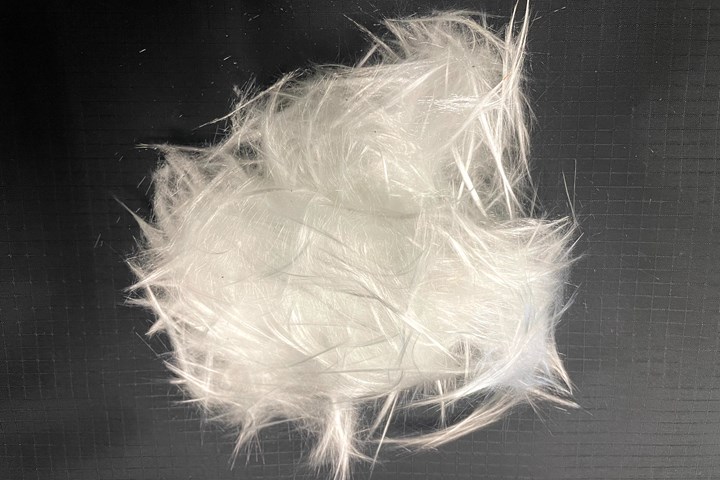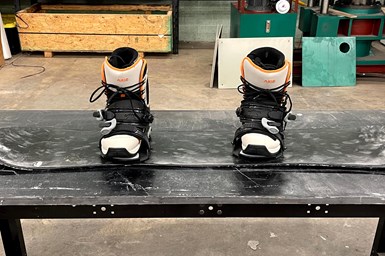Carbon Rivers to commercialize fiberglass composites upcycling project
Novel pyrolysis method recovers fiberglass reinforcement into new, high-value discontinuous composites with minimized input energy requirements for a true circular economy.

Clean glass fiber. Photo Credit: Carbon River LLC
Carbon Rivers LLC (Knoxville, Tenn., U.S.) reports that it was selected by the U.S. Department of Energy (DOE) via a Small Business Innovation Research (SBIR)/Small Business Technology Transfer (STTR) project to commercialize new technology for the upcycling of glass fiber-reinforced polymer (GFRP) composites from retired wind turbine blades.
According to the company, this novel pyrolysis, or thermal decomposition, method separates polymers and other organic materials from fiberglass reinforcement, allowing the fibers to be recovered mechanically intact and then reused for manufacturing. Then, these resins/organics are captured as energy to power the recovery process, reportedly minimizing input energy requirements.
Overall, this process is said to enable glass fiber composite waste to be recovered back into new, high-value composites for a true circular materials economy.

A snow board we made out of the upcycled glass fiber. Photo Credit: Carbon Rivers LLC
Carbon Rivers says recovered fiberglass can be upcycled into a variety of discontinuous composites such as nonwoven fabrics, compounded thermoplastics, injection molding pellets and 3D printer filaments. The company is also working to design materials for different composite-consuming industrials such as marine, automotive, sporting goods, etc.
Additionally, the company has already expanded its upcycling capacity at its Knoxville, Tenn., U.S. facility. This will include a new 2.5-acre laydown yard for accepting incoming wind blade and other composite waste material streams. A new 26,000-square-foot facility retains a 30 ton/month pilot recycling line and 40 ton/month thermoplastic pellet production capacity. Carbon Rivers is currently running a one ton/day process, but will scale up to a 20 ton/day process next year. By 2023, this will be 200 tons/day in multiple facilities located in the U.S., Europe and Asia.
Related Content
-
Materials & Processes: Composites fibers and resins
Compared to legacy materials like steel, aluminum, iron and titanium, composites are still coming of age, and only just now are being better understood by design and manufacturing engineers. However, composites’ physical properties — combined with unbeatable light weight — make them undeniably attractive.
-
Natural fiber composites: Growing to fit sustainability needs
Led by global and industry-wide sustainability goals, commercial interest in flax and hemp fiber-reinforced composites grows into higher-performance, higher-volume applications.
-
Materials & Processes: Fabrication methods
There are numerous methods for fabricating composite components. Selection of a method for a particular part, therefore, will depend on the materials, the part design and end-use or application. Here's a guide to selection.
















